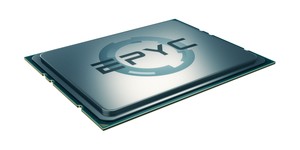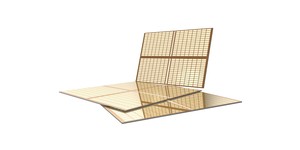Chinese CPU maker, Zhaoxin, is keen to catch up to AMD and Intel
December 16, 2019 | 15:00
Companies: #zhaoxin

There could be a new CPU maker keen to reach parity with Intel and AMD, and its name is Zhaoxin.
A Chinese CPU manufacturer, it's recently outlined its designs for its next-generation KaiXian and KaiSheng processors. Currently, the KaiXian chips are designed for the consumer market, while the KaiSheng processors are aimed at the server market. Its existing line of KaiXian KX-6000 series and KaiSheng KH-30000 processors are on the outdated 16nm process node, but Zhaoxin has plans to catch up with Intel and AMD by 2021.
Currently, KaiXian KX-6000 processors max out at 8 cores and feature base clocks up to 3GHz. They're based on the LuJiaZui microarchitecture and are produced with TSMC's 16nm manufacturing process. However, the plan is for future KX-7000 chips to implement a brand new microarchitecture that Zhaoxin has yet to unveil.
Wikichip reported that TSMC is in charge of producing future chips and the KX-7000 processor will use the company's 7nm process node. That's a massive leap for Zhaoxin, and it presumably demonstrates the firm's ambition right now.
Wikichip has also reported that Zhaoxin is working on several sub-7nm designs for mobile and desktop CPUs, but no concrete details have been provided.
There's also similarly advanced news for the firm's server based offerings. Currently, the KH-30000 offers up to 8 cores with base clocks up to 2.7GHz. While the KH-40000 will keep the same process node of 16nm, Zhaoxin plans to quadruple its core count from 8 to 32. In theory, that would put it in line with AMD's Threadripper chips, at least when it comes to core counts.
It looks like the KH-40000 will have dual-socket support so it should be possible to combine two to have up to 64 cores in a single system. Bear in mind though that the 16nm process node means continued use of DDR4 RAM plus the PCIe 3.0 interface.
For now, it's all a tad theoretical, and Zhaoxin has been known to delay launches for a year or more in the past. There are also certainly questions to raise about the core design and power efficiency going on here, so maybe don't expect to switch to a new processor any time soon.
There's also the matter that this may be more of a reaction to China's plans to lessen its reliance on foreign technology, rather than anything more wide-reaching.
Still, it'll be interesting to see if Zhaoxin catches up with the mighty dominance of Intel and AMD.

MSI MPG Velox 100R Chassis Review
October 14 2021 | 15:04








Want to comment? Please log in.